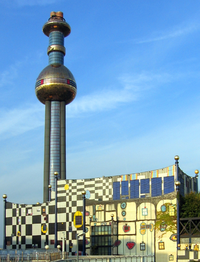
Photo from wikipedia
This paper performs an assessment of the potential energy-purposed H2 production in Ecuador from municipal solid waste (MSW). Thermochemical and electrochemical paths are considered for MSW conversion. Ecuadorian provincial MSW… Click to show full abstract
This paper performs an assessment of the potential energy-purposed H2 production in Ecuador from municipal solid waste (MSW). Thermochemical and electrochemical paths are considered for MSW conversion. Ecuadorian provincial MSW distribution (2016 data) provides the base information for assessing and constructing maps of the theoretical H2 production yield and its density per unit area. Additionally, the use of H2 in fuel cell-propelled urban public transportation is proposed as an end-use consumer. Results show that it is possible to fulfil urban public transportation energy demand in 91% of the country with MSW-derived H2; in fact, the three provinces that together generate 57% of the available MSW (Guayas, Pichincha, and Azuay) could satisfy their public transportation diesel fuel demand with MSW-derived hydrogen. In the case of these three provinces, H2 generation could replace by 2.57 times (on average) the local urban transportation diesel fuel demand. Finally, a possible scenario for a non-conventional H2 production path is shown, which could also represent a suitable MSW final disposal alternative with benefits to urban mobility.
Journal Title: Waste and Biomass Valorization
Year Published: 2019
Link to full text (if available)
Share on Social Media: Sign Up to like & get
recommendations!